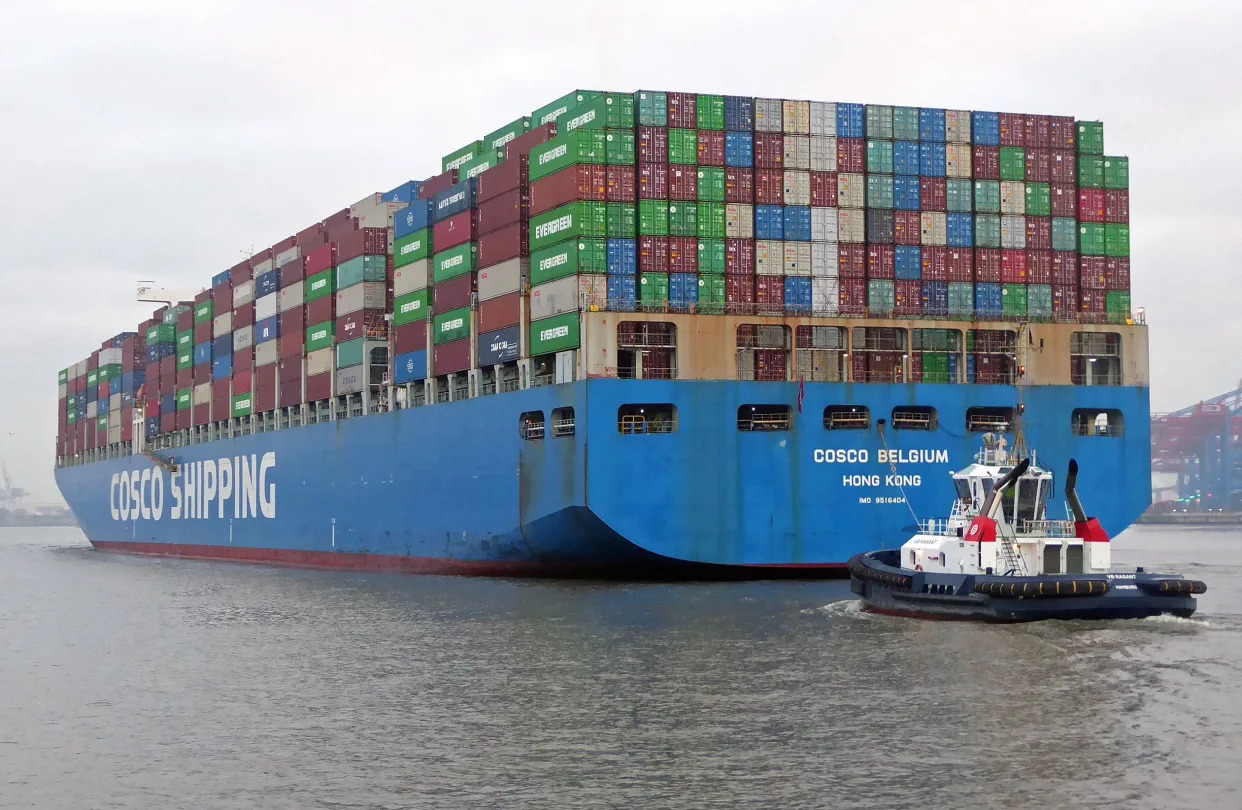What a Chinese port in Perú means for Washington
Jenna Moon
Fri, June 14, 2024

Insights from The Wall Street Journal, Reuters, Foreign Policy, and Bloomberg
The News
A $1.3 billion Chinese-constructed port in Perú is being watched closely by Washington as it monitors Beijing’s growing influence in South America.
The Chancay port, scheduled for launch later this year, will open a direct route between Perú and Shanghai and receive some of the world’s largest ships.
SIGNALS
Semafor Signals: Global insights on today's biggest stories.
Megaport challenges US dominance in Latin AmericaSource: The Wall Street Journal
The deepwater port will give Beijing unparalleled access to South America’s rich resources — raising concerns in Washington that it could lose its influence in the region, The Wall Street Journal reported. Beijing is so invested in the port that Chinese leader Xi Jinping is expected to attend its inauguration. That has rattled analysts who have closely watched China’s growing sway in the Global South: “It really platforms China in a major new way in South America as the gateway to global markets. It is not just a commercial issue at that point, it is a strategic issue,” Eric Farnsworth, a former high-ranking State Department diplomat, told the Journal.
Port control spat raises questions about Beijing’s involvementSources: Reuters, Foreign Policy
The agreement signed between China’s COSCO Shipping Ports and the Peruvian government has given the firm total control over its operations, due to an “administrative error” in the paperwork included by negotiators. COSCO threatened last month to pull out of the deal if it doesn’t retain full control over the port, Foreign Policy noted. The issue “raises the question of how many other governments have enthusiastically negotiated agreements with Chinese infrastructure investors without understanding all the fine print,” FP columnist Elisabeth Braw wrote.
Second port could work as ‘counterweight’Source: Bloomberg
Concerns over the port have prompted Perú to try to woo back the US. Lima is pitching a second port to US investors in hopes of offering Washington a “counterbalance” to Beijing in the country, Bloomberg reported this week. The Peruvian ambassador to the US told the outlet that “one hundred percent of Lima’s electricity is owned by China, many of the copper mining projects are owned by China,” adding, “the United States has noticed this. But it’s not enough to notice it, action is needed.”
Using China as a Foil, Peru Pitches New Port to American Investors
Antonia Mufarech
Thu, June 13, 2024 a

(Bloomberg) --
Peru is pitching a new port project to investors in the US, describing it as a potential balance to growing Chinese influence over maritime trade in the South American nation.
China’s state-owned Cosco Shipping is set to inaugurate the $1.3 billion Chancay port later this year, which is likely to upend South American trade with Asia. Now, Peruvian officials are trying to use the Chancay example to continue growing the country’s potential as a regional trade hub, with geopolitics in mind.
“It would be a port that could be a counterweight to China’s Chancay project,” Alfredo Ferrero, Peru’s ambassador to the US, told Bloomberg in an interview following a presentation to executives in New York.
The Chancay port has worried American officials, who openly criticize Chinese investments in Latin America that dwarf those of US companies. Peru expects Chinese President Xi Jinping to travel to Peru for Chancay’s inauguration at the Asia-Pacific Economic Cooperation (APEC) conference. While Chancay is drawing attention now, it is just the latest example of Chinese investments in Peru.
“One hundred percent of Lima’s electricity is owned by China, many of the copper mining projects are owned by China. China will have the largest port in South America,” Ferrero said. “Objectively, that is the situation and the United States has noticed this. But it’s not enough to notice it, action is needed.”
Ferrero is a former Peruvian trade minister who negotiated a free trade agreement with the US that is still in place. He was named ambassador to the US early this year and has set out to lure fresh investments.
The new port project he is pitching, known as Corio, is almost 700 miles south of Chancay. It is also south of Callao, where DP World and APM operate terminals. The Corio area is also close to the Matarani port, which is already a key copper export hub. Peru’s port authority recently announced a study to understand what cargo demand would look like for Corio.
Ferrero is aware that the idea of the Corio port is at a very early stage. But he says the project has potential because of its proximity to Chile, Argentina and Bolivia, which are all trying to increase lithium production due to demand for electric vehicles.
Ferrero is working to grow awareness of the Corio port project in the US to attract private investors. “The idea is that the American government calls for possible interested parties for them to make the investment,” he said.
That doesn’t mean Peru is only asking American investors to consider the Corio port project, however. But Ferrero hopes American investors will look into it. “Hopefully it’s from the US, but it can be from whichever country that’s interested.”
Bloomberg Businessweek
No comments:
Post a Comment